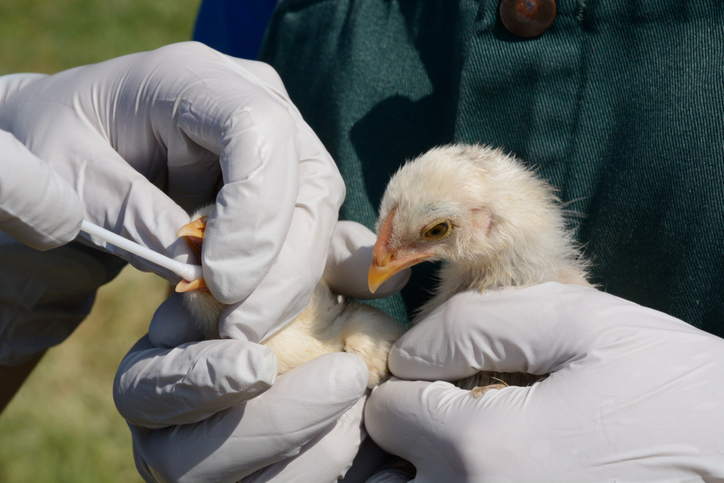Note: If you have a new or ongoing cough, a high temperature (fever) or you've noticed a change in your sense of smell or taste, you may have coronavirus (COVID-19). Read more about coronavirus or use our Coronavirus Risk Assessment to check your risk.
Flu is not a 'bad cold'; it’s a completely different condition - one that can be much more serious than a cold. Each year, thousands of people die of complications after catching the flu.
Colds and flu share some of the same symptoms, such as a cough or sore throat, but they are caused by different viruses.
Should you see a doctor for a cold or flu?
If you're generally fit and healthy, you can usually manage the symptoms of a cold or flu yourself without seeing a doctor.
Look after yourself by resting, drinking non-alcoholic fluids to prevent dehydration and avoiding strenuous activity.
Painkillers may help relieve any aches and pains you have. Speak to a pharmacist or doctor for further guidance on how to get and take these medications.
Whether you have a cold or flu, you should get medical help if you have:
- a chronic condition, such as asthma, diabetes or heart disease, and a cold or flu is making your symptoms worse
- a very high fever as well as an unusually severe headache or abdominal or chest pain
Flu vaccine
Around 200 different viruses cause colds, but just 3 cause flu. However, there are many strains, or types, of flu viruses.
Flu strains can change each year. The World Health Organization (WHO) looks at the strains of flu that might be around during the next flu season and recommends those to be included in vaccines for that year.
The vaccines then become available ahead of flu season as it can take up to 2 weeks for your body to build immunity after having the vaccine.
You should have the flu vaccine every year, not only to protect you against a new strain of flu, but to boost antibodies in your body that help you fight it.
Certain people are recommended to get the vaccine as they are at more risk if they become infected. This includes people who are:
- aged 50 or over
- pregnant
- in long-sat residential care
- certain health conditions
- frontline health and social care workers
Cold and flu symptoms
Colds cause more nasal problems, such as a blocked nose, than flu. Fever, tiredness (fatigue) and muscle aches are more likely and more severe with flu.
Cold symptoms
Symptoms of a cold include:
- runny nose – beginning with clear mucus that develops into thicker, green mucus as the cold progresses
- blocked nose
- sore throat
- sneezing
- cough
You may also have a mild fever, earache, tiredness and headache. Less common symptoms include eye irritation, aching muscles, and loss of taste and smell.
Symptoms develop over 1 or 2 days and gradually get better after a few days. A cold may last about 1 week, while any cough you have can last for up to 3 weeks.
A cold is most contagious during the early stages, when you have a runny nose and sore throat.
Flu symptoms
Flu usually comes on more quickly than a cold, and symptoms include:
- sudden fever of 38 to 40C
- muscle aches and pains
- sweating
- feeling exhausted and needing to lie down
- a dry, chesty cough
With flu, you may also have a runny nose and be prone to sneezing, but these are not usually the main symptoms of flu.
Flu symptoms appear around 2 days after infection and most people recover within a week, although you may feel tired for longer.
A severe cold can also cause muscle aches and fever, so it can be hard to tell the difference.
If you’re still not sure if you have a cold or flu, use our cold or flu symptom checker.
Are you more at risk from cold or flu?
Some people need to take extra care with colds and flu as they're more at risk of serious chest complications, such as pneumonia and bronchitis.
You’re more at risk of complications if you’re aged 65 or over. Those aged under 65, including children, are more at risk of complications if they have:
- serious heart, lung, kidney or liver disease
- diabetes
- a weakened immune system because of a medical condition or treatment
You’re also more at risk of complications if you’re pregnant or obese.
The flu vaccination is the best protection against the virus.
How to prevent the spread of cold and flu
Cold and flu viruses are spread by droplets that are coughed or sneezed out by an infected person. Other people can breathe in these droplets or transfer the droplets to their eyes or nose via their fingers.
You can protect yourself and others against colds and flu by:
- coughing or sneezing into a tissue
- throwing a used tissue away as soon as possible
- washing your hands regularly with soap and warm water
- having a flu jab every year if you're in an at-risk group
Colds and flu viruses can also be passed on via infected droplets on objects or surfaces, such as door handles.
You can help to prevent passing on or getting colds and flu by washing your hands regularly, and avoiding touching your eyes and nose.
Key points
- colds and flu share some of the same symptoms (cough, sore throat), but are caused by different viruses
- if you're generally fit and healthy, you can usually manage the symptoms of a cold or flu yourself without seeing a doctor
- but you should get medical help if you have cold or flu and you also have a chronic condition, such as asthma, diabetes or heart disease, a very high fever, an unusually severe headache, or abdominal or chest pain
- flu usually comes on more quickly than a cold
- you can help prevent flu by having the flu vaccine
References
- Common cold | Topics A to Z | CKS | NICE [Internet]. Cks.nice.org.uk. 2020 [cited 6 October 2020]. Available here.
- Influenza - seasonal | Topics A to Z | CKS | NICE [Internet]. Cks.nice.org.uk. 2020 [cited 6 October 2020]. Available here.
- Common cold [Internet]. nhs.uk. 2020 [cited 6 October 2020]. Available here.
- Flu vaccine [Internet]. nhs.uk. 2020 [cited 6 October 2020]. Available here.




